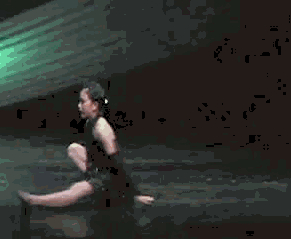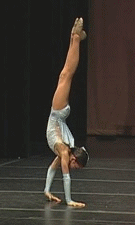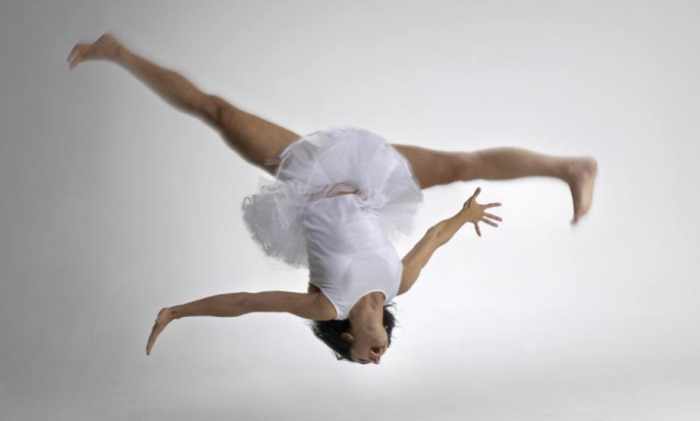If you’ve ever watched a gymnast flying across the floor, it’s undeniable that their movements are dance-like. However, acrobatics is often considered more of a sport than a dance form.
That was until Acro dance came along.
As the name suggests, Acro dance is a combination of classical dance moves and acrobatics.
It not only requires a keen mind for rhythm, coordination, good strength, and flexibility, but this sport also demands precision and a fair bit of boldness from the dancer.
In this article, we’ll look into the choreographic wonder that is Acro dance. Maybe you’ll love it enough to give it a shot!
Table of Contents
What Is Acro Dance?
The name “acro dance” basically tells you all that you need to know about this dance form. By definition, it is a combination of classical dance moves (like ballet, jazz, and contemporary dances) with moves from gymnastics.
A key characteristic of the Acro dance is that it seamlessly blends the two styles.
If you were to watch a good performance of acro, you wouldn’t be able to notice when the dancer has transitioned from a “dance” move to a “gymnastic” move.
Acro dancers spend a lot of time on their transition moves so that they all appear smooth and graceful.
And last but not least, keep in mind that in acro, the “dance” portion must be greater than the “gymnastic” portion.
For example, a gymnastic floor exercise routine can hardly be called acro. There are little to no dance movements and there are no smooth transitions between the dance and gymnastic parts.
Vice versa, a dance routine without any gymnastic moves is just … well, dance.
History
Acro dance has a pretty long history, dating back to the 1900s. This form of dance emerged in the U.S. and Canada during this period as an act in vaudevilles and circuses.
Despite dancing and gymnastic acts already being performed in vaudevilles before the 1900s, it was not until this period that people began to combine the two.
But Acro dance didn’t appear suddenly and out of thin air. Most historians agree that it’s a gradual appearance in a variety of forms and acts.
As a result, nobody can tell for certain who was the first person to ever invent this dance form. Even more so, nobody can tell exactly the exact time when Acro dance, as we know it today, came into existence!
Techniques & Tricks
As previously mentioned, acro dancing is a combination of traditional dance and gymnastics.
Because of this, when people are discussing acro-dancing techniques and tricks, they will usually separate it into two distinct components: the dance component and the gymnastic component.
A professionally executed acro dance routine is made up of many tricks. They vary in complexity and difficulty.
To tell them apart, these tricks are categorized into classes based on the number of dancers needed to perform them.
Solo Tricks (Single Tricks)
Solo tricks are performed either by one solo dancer or by independent dancers (when danced in a group). Here are some common solo tricks that you may see on the stage.
Headstand
A headstand is a beginner Acro dance trick. If you decide to take up this sport, it’s very likely to be the first trick that you’re going to be taught.
But despite it being a fundamental move, when it’s blended well into a routine, a headstand will still make your performance more beautiful.
The headstand is used as a transition to other moves. It’s also a good introductory trick that, once mastered, will allow you to learn more complex tricks like elbow stand and handstand.
Black Walkover
A black walkover begins with the dancer in a standing position. Then, he arches his body backward until his hands touch the ground and his feet are positioned flat on the floor.
This position is called a back bridge in gymnastics.
One leg is then lifted upward. The rapid movement builds momentum in the lower body and lifts the other leg.
Both legs will go aerial for a short period, swinging to the back of the dancer. When they touch the ground, the dancer returns to a standing position.
Cartwheel
You probably already know what a cartwheel looks like.
It is performed by placing the hands on the floor one at a time while the body goes through an inverting motion, ending with the dancer standing upright once again.
It’s a fairly basic move but, like the headstand, can look beautiful when it’s choreographed and executed well.
Handstand & Hand Walking
A handstand is basically like a headstand, but you’re holding your body aloft just by your two hands against the ground without the addition of the top of your head.
To qualify as a handstand, you must hold your body completely static. If your arms move around, then it would become hand walking.
Most people assume that to perform a hand walk, you must first master a handstand. That’s not exactly true.
A handstand is more difficult to execute than a hand walk. While you’re practicing handstands, there’s a good chance that you will shift your hands around to maintain balance. You just did a hand walk!
Both of these tricks require a great deal of strength (particularly in the triceps and deltoid areas). They also demand a lot of balance and spatial awareness on your part.
Side Aerial
A side aerial is done by performing a cartwheel but without using your hands to support your body. You must perform a full sideway rotation while completely airborne.
It is one of the most difficult solo tricks that you’re going to learn. Compared to the other tricks on this list, you’re more likely to be injured while practicing.
So, good technique and a good instructor are necessary to execute this move safely and well.
Double Tricks
A pair of dancers perform double tricks. An extra dancer opens up a near-limitless amount of possibilities and tricks.
The following are two common double tricks that you’ll see very often during acro dance performances.
Pitch Tuck
In a pitch tuck, the pair is separated into one with a heavy weight and one with a lightweight. The heavier partner serves as the support, while the lighter partner performs the primary trick.
First, the heavy partner goes into a lunge-like position with their hands out, palms facing up. The lighter partner will step on the other dancer’s leading thigh and hand, which will provide a thrust to shoot them into the air.
While airborne, the lighter partner will perform a somersault before landing upright on their partner’s supporting hands, completing the trick.
Double Cartwheel
A double cartwheel requires both partners to be of the same height and weight.
The 1st partner starts up in a short squat. The 2nd partner will execute a cartwheel by grabbing onto the 1st partner’s thighs. Halfway through the rotating movement, the 1st partner will grab the 2nd partner’s hips.
Once the 1st partner finishes his cartwheel, he will act as the support for the 2nd partner to execute his cartwheel.
The trick finishes when the 2nd partner touches down once again on his feet.
A double cartwheel can look spectacular when the partners are in complete sync with one another and execute the move smoothly.
Group Tricks
When a trick requires more than two dancers, it’s classified as a group trick.
Coordinating between two dance partners is hard, coordinating between three or more dancers is even harder.
So, group tricks require not just individual skills from each participating dancer, but also trust and a good team dynamic between the different members in the performance.
There are many group tricks written in textbooks, but the most notable is the bridge pyramid.
It’s one of the most common group tricks out there and if you’re watching a performance by an acro dance group. It’s bound to appear at some point.
Bridge pyramid
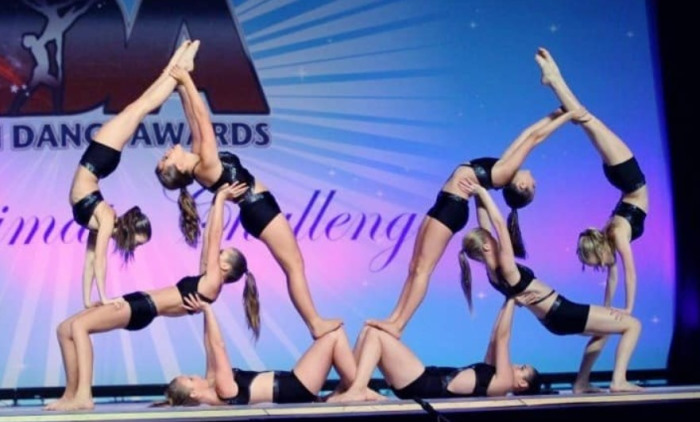
A bridge pyramid is highly flexible and can be performed by any number of dancers. At its most basic form, two dancers serve as the “base” for the pyramid.
The next tiers are built by other dancers who can go into a variety of positions (handstands, headstands, kneeling) on top of the supporting dancers at the base.
Acro Dance vs. Acrobatic Gymnastics
It’s very easy to confuse the two. Acrobatic dancing (acro dance) may also be called “gymnastic dancing”.
As for acrobatic gymnastics, it’s not rare to hear it referred to as “acro gym” or “acro gymnastics”.
But they’re a lot easier to distinguish than you may think.
Scoring
Acro dance is considered performance art. So, it leans more toward creative interpretations and expressions. In acro dancing competitions, judges focus more on how expressive your performances are.
Meanwhile, the acro gym is a sport with carefully defined guidelines. You’re scored on how good and precise your movements are.
Supportive tools
In Acro dance, the only thing you can count on to deliver your performance is your body. Nothing else.
In the acro gym, you have the support of a multitude of tools, like beams and bars.

Characteristic
Acro dance focuses a lot more on fluidity. For a routine to be considered acro dancing, it must be composed of at least 50% dance.
Meanwhile, the acro gym is less about dancing and more about acrobatic elements. It is all about strength and flexibility.
Places for practicing and performing
If you participate in both, you’ll also notice the venue of performance and training to be different between the two of them.
Acro-dancing is usually practiced in dance studios and performed on stages. Acro gym is practiced in full-fledged gyms (and also performed in gyms with supportive equipment).
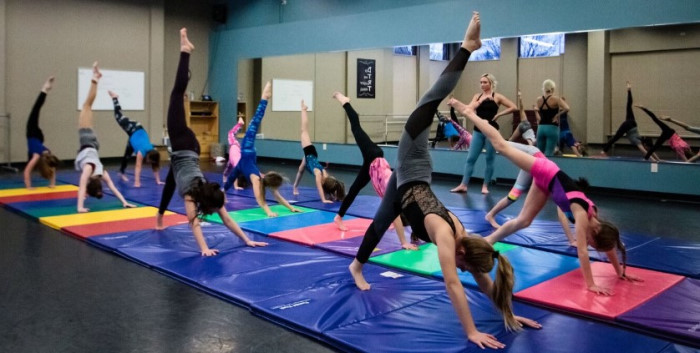
Acro Dance Costumes
Clothes
Acro dancers have specialized costumes that they wear not just for aesthetic purposes, but also safety reasons. These costumes are usually form-fitting to allow the dancer to move more freely.
The design also means they’ll be able to perform without the costume interfering with their tricks and control, which is how they protect the wearer from injuries.
Acro dancers may also wear a few pieces of accessories like headwear or come with extra features like loose, short skirts for aesthetic reasons.
But all of those extras are calculated and tested rigorously to ensure that they don’t interfere with the wearer’s performance and jeopardize their safety.
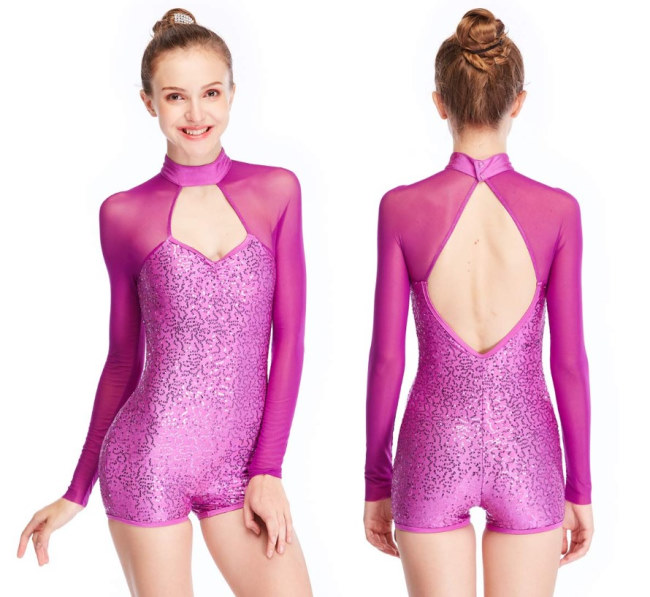
Footwear
Footwear is critically important for acro dancers. Unlike gymnasts, acro dancers perform on dance stages with hard floors rather than padded floors. They cannot perform barefoot as a result.
A good pair of dancing shoes have to provide good traction, abrasion protection, and cushioning.
The stage could be slippery, so high-traction soles can prevent slipping. Abrasion resistance is important because the dancer moves around a lot and their feet experience a lot of friction in the process.
Without proper protection, the sole or the ball of the foot can swell or blister.
Lastly, cushioning can protect the wearer’s feet from shocks when they land on the hard floor.
For this purpose, acro dancers usually wear jazz dance shoes. When they’re worn by acro dancers, they’re called acro shoes.
An alternative to acro shoes is foot thongs. They’re slip-on footwears that cover only the most injury-prone part: the ball of the foot.
Foot thongs usually have a flesh color, which, when worn, can make it look like the dancer is dancing with bare feet.
Famous Acro Dancers
Sherman Coates
Sometime between 1900 and 1914, dancers in the Watermelon Trust troupe recalled that Sherman Coates was the first acro dancer they had ever seen.
Born in 1872, he was a life-long enthusiast and performer of acrobatic tricks and an excellent dancer. Coates kept that passion going up until the day he died in 1912.
He’s part of the small pools of names that people suspected to be the one who “invented” acro dancing.
Tommy Woods
Another documented case is Tommy Woods. He was a tap dancer who gained prominence for his slow-motion acrobatic dance in the ‘Shuffle Along’ musical.
He timed all of his movements along with the music, landing his tricks right on top of the beat. It was completely unheard of (and unseen) by vaudeville audiences at the time.
Like Sherman Coates, he’s one of the earliest documented performers of acro dancing.
Kristin Allen
Coming back to the modern day, Kristin Allen is a world champion acrobat and one of the leading figures in the acro-dancing community.
Kristin’s career in gymnastics began at the age of 9. In the decades that followed, she would represent the United States in a great many world-caliber gymnastic competitions.
Notably, she is the first and only American to ever win a Gold Medal in gymnastics at the World Games.
After retiring from competitive sports, Kristin joined up with Cirque du Soleil, the largest theatrical production company in the world. She performed over 900 shows for the company.
After suffering from a traumatic back injury, she retired from performing altogether and is now taking a training and consultant position in Los Angeles, California.
Kristin Allen is also a keynote speaker and appeared in many high-profile events.
Songs/Music
Acro dance can be performed in songs with either a fast or slow beat. This type of dance is not picky when choosing music.
Here are some songs often used in acro dancing.
- That’s my girl – Fifth Harmony
- Unstoppable – Sia
- Paint it, black – Ciara
- Madness – Ruelle
- The cell – C2C
Competition
Acro Dance Company/Academy
Acro Dancing Image
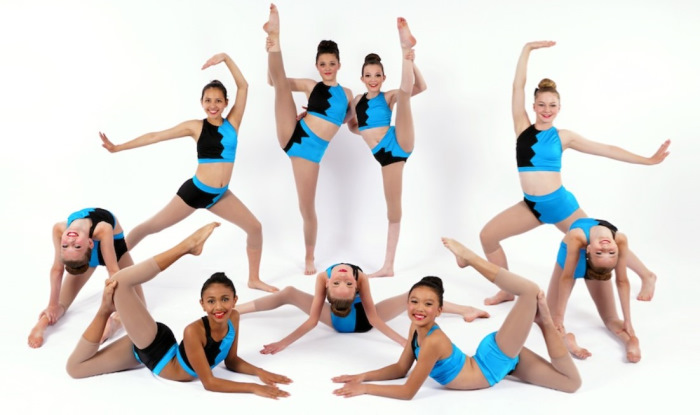

FAQs
1. What Does Acro Mean in Dance?
Acro stands for “Acrobatics”. The word acro dance is a shortened form of acrobatic dance.
2. Why Was Acro Dance Created?
Acro dance was created by Vaudevilles in the 1900s as a new show to entice their audiences even further.
Previously, dancing and gymnastics were performed separately. By blending the two, they created a more exciting and more beautiful program for themselves.
3. Are Acro and Gymnastics the Same Thing?
Acrobatics and gymnastics are different from one another.
The biggest difference between them is that acrobatics (acro) is performed on a hard stage, while gymnastics are usually performed on a padded stage.
Final Words
Acro dance is a form of dance that requires a lot of commitment and skills from the dancer.
It requires diligent training, great strength, flexibility, as well as boldness (some of these moves are quite dangerous to perform, even when trained properly).
If you’re up for the challenge, find some classes and try them out!

